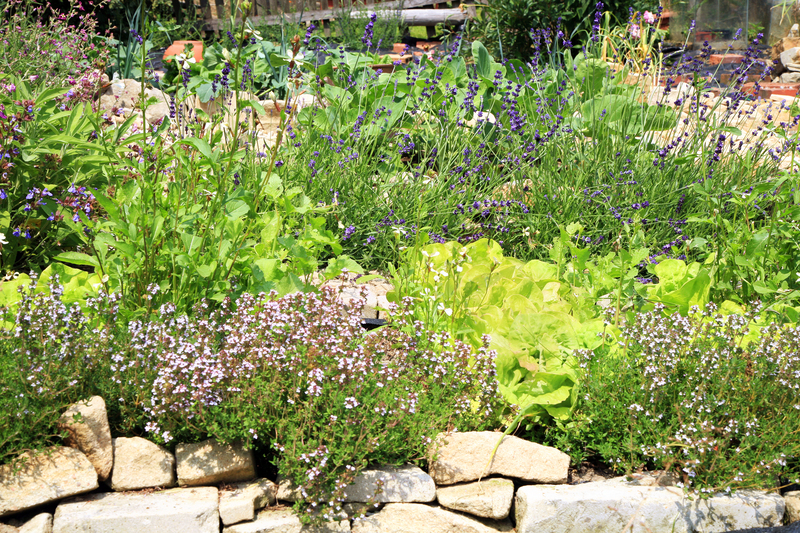Flourishing Greeneries: The Role of Gardens in Climate Action
Posted on 03/07/2025
Flourishing Greeneries: The Role of Gardens in Climate Action
In an age of mounting environmental challenges, the spotlight is turning towards green spaces for actionable climate solutions. While forests often take center stage, gardens--be they small backyard plots, expansive community parks, or rooftop oases--are increasingly recognized as dynamic agents for combatting climate change. This comprehensive article explores the critical role of gardens in advancing climate action, delving into their environmental, social, and economic benefits and providing practical guidance for cultivating climate-smart greeneries.
Understanding the Climate Power of Gardens
Gardens are not just places of serenity and beauty; they are vital ecosystems that actively participate in climate mitigation and adaptation. The emerging concept of sustainable gardening involves carefully designing, planting, and maintaining green areas to maximize their ecological benefits. When managed thoughtfully, gardens for climate action support carbon sequestration, enhance biodiversity, regulate urban temperatures, and boost community resilience.
Green Spaces as Carbon Sinks
One of the most significant contributions of flourishing ecoscapes is their ability to sequester carbon dioxide. Plants absorb CO2 during photosynthesis and store carbon in their roots, stems, leaves, and surrounding soils. Even modest home gardens can serve as miniature carbon sinks, especially when rich in perennial shrubs, trees, and groundcover.
- Trees: Mature trees can absorb up to 48 pounds of CO2 per year.
- Healthy Soil: Rich, undisturbed soil stores significant carbon below ground.
- Dense Planting: The more diverse and layered a garden, the more carbon it can retain.
Urban gardens counterbalance emissions from transportation and industry, helping cities lower their overall carbon footprint. When scaled, urban greening initiatives can have a measurable impact on air quality and climate stabilization.

Biodiversity and Ecosystem Services in Sustainable Gardens
Gardens that promote biodiversity are fundamentally more resilient and beneficial for the climate. By integrating native plants and diverse species, gardens foster ecological balance and provide vital habitats for pollinators, birds, insects, and small mammals. This, in turn, reinforces natural systems that regulate local climates and protect against pests and diseases.
Key Biodiverse Gardening Techniques
- Plant Native Species - These are naturally adapted to local conditions, requiring less water and chemicals.
- Include Pollinator Plants - Flowers such as lavender, coneflower, and milkweed support bees, butterflies, and beneficial insects.
- Create Water Features - Ponds or bird baths attract amphibians and birds, expanding ecological niches.
By enhancing urban and suburban biodiversity, gardens help urban areas absorb heat, filter air, manage excess rainwater, and maintain balances within food webs--all of which bolster efforts in climate adaptation.
Gardens as Urban Cooling Agents
One notable threat exacerbated by climate change is the urban heat island effect, where built-up areas become significantly warmer than surrounding countryside due to concrete, asphalt, and minimal vegetation. Integrating green spaces, such as rooftop, vertical, and community gardens, directly mitigates this effect.
- Shading Structures: Trees and trellised plants provide crucial shade, lowering surface and air temperatures.
- Transpiration: Plants release water vapor, cooling the air through natural processes.
- Reduced Energy Demand: Cooler neighborhoods mean less reliance on energy-intensive air conditioning.
Research reveals that cities with extensive green infrastructures are more resilient to heatwaves and enjoy improved public health outcomes. These small climate actions, replicated across neighborhoods, create a powerful cooling network throughout our cities.
Practical Steps for Climate-Smart Gardening
Whether you're tending a balcony planter or coordinating a large park, purposeful gardening tactics can drive climate benefits. Consider these climate-focused gardening strategies to maximize environmental impact:
1. Plant Selection for Maximum Carbon Capture
- Select perennial shrubs, trees, and groundcovers over annuals to store carbon longer-term.
- Mix deep-rooted varieties which enhance soil carbon storage and increase drought resilience.
2. Composting and Soil Health
- Use composted kitchen and garden waste to improve soil fertility and structure, further locking away carbon.
- Encourage earthworms and mycorrhizal fungi: these enhance nutrient cycles and soil storage capacity.
3. Water Conservation and Rain Gardens
- Install rain barrels and rain gardens to collect and filter rainwater, reducing runoff and promoting groundwater recharge.
- Mulch around plants reduces evaporation and supports consistent soil moisture levels.
4. Avoid Synthetic Chemicals
- Opt for organic gardening methods; synthetic fertilizers and pesticides can disrupt soil biology, reducing carbon storage and harming beneficial insects.
5. Green Infrastructure Integration
- Incorporate vertical walls, green roofs, and communal planters in dense urban areas to maximize growing space.
Each of these steps, when multiplied across millions of gardens worldwide, represents actionable climate solutions accessible to all.
The Social and Economic Benefits of Climate-Positive Gardens
Beyond their direct environmental impact, gardens as climate action hubs provide significant societal and economic rewards:
- Health and Well-being: Gardens support mental health, promote physical activity, and provide therapeutic spaces, especially in high-density urban environments.
- Community Empowerment: Community gardens build social cohesion and empower residents to tackle climate issues collaboratively.
- Food Security: Edible gardens increase access to fresh, locally grown food, reducing dependence on carbon-intensive supply chains.
- Property Value: Green neighborhoods are proven to attract investment and boost real estate values.
The combination of ecosystem services, food production, and community building cements the indispensable role of gardens in climate adaptation strategies.
Large-Scale Gardening Movements for Climate Resilience
On a broader scale, movements like urban rewilding, permaculture initiatives, and citywide community gardening networks are mobilizing collective efforts for greener, climate-smart cities. Organizations are launching tree-planting campaigns, pollinator corridors, and edible landscaping projects that transform entire regions.
Case Studies: Gardens Leading Climate Solutions
- Singapore's Green Roofs: Pioneering policies require new buildings to feature rooftop gardens, reducing city temperatures and promoting biodiversity.
- Detroit's Urban Farms: Community gardens have reclaimed vacant lots, absorbing carbon while providing food and opportunity.
- UK Pollinator-Friendly Gardens: National programs sponsor schools and communities to plant wildflower meadows, supporting bees and butterflies critical to food security.
These large-scale initiatives serve as blueprints for other cities and rural communities seeking integrated, scalable climate action via greeneries.
Challenges and How to Overcome Them
While the role of gardens in climate response is promising, several obstacles must be addressed for maximum impact:
- Limited access to green space--especially in densely populated urban areas. Urban policy changes, incentives for rooftop gardens, and small-scale container gardening can help bridge this gap.
- Lack of gardening knowledge. Workshops, online guides, and community leaders can spread expertise and encourage sustainable practices.
- Resource scarcity. Promoting recycled materials, communal tool libraries, and water-saving techniques can make gardens more accessible.
With collaborative effort, education, and supportive policies, the climate benefits of gardens can be substantially scaled, ensuring long-term ecological health and adaptability.

How Individuals Can Join the Climate Gardening Movement
Every gardener is a climate advocate. Here's how you can contribute to a greener, more resilient future through your own flourishing garden:
- Choose climate-resilient plants that thrive with less water and tolerate local weather extremes.
- Reduce lawn areas in favor of native grasses, wildflowers, and shrubbery to improve biodiversity and carbon storage.
- Compost organic waste to create nutrient-rich soil and cut landfill emissions.
- Promote wildlife habitats via birdhouses, logs, and pollinator-friendly patches.
- Encourage neighbors and your local government to invest in green infrastructure and community gardening projects.
Small actions create ripples, and when communities work together, the cumulative effects can help slow climate change while building health and prosperity.
Conclusion: Gardens as the Green Beating Heart of Climate Action
As the impacts of climate change become ever more apparent, the case for climate-friendly gardens grows ever stronger. Gardens--no matter their size--are much more than decorative green patches. They are the green beating hearts of communities, powerful solutions for a low-carbon future that nurture people and planet alike. Through conscious design, biodiversity, water management, and community engagement, flourishing greeneries can anchor cities and neighborhoods firmly on the path of resilience and sustainability.
Now is the time to plant the seeds of change in our own gardens, contributing to a global movement for climate adaptation and thriving ecosystems. Every flower, tree, and patch of soil counts in the quest for a greener, more sustainable world.

